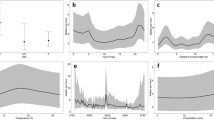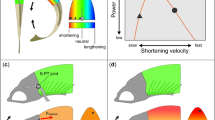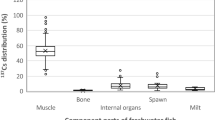Abstract
THE escape reaction of the crayfish consists of a rapid backward swimming movement brought about by powerful flexion of the abdomen. In the course of a primarily anatomical re-investigation (as yet unpublished) of the musculature responsible for this flexion in the crayfish Procambarus clarki, it was observed that some 40 percent of the cross-sectional area of the main flexor musculature is contributed by three muscles which both arise and insert largely or entirely dorsal to the intersegmental hinge. These are the central, transverse and dorso-lateral muscles, in the terminology of Daniel1. The expected “direct” action of such muscles would be extension rather than flexion; that so large a proportion of the flexor musculature is apparently “indirect” in its action was considered to be of a sufficiently general physiological interest to be presented separately from the main body of the work.
This is a preview of subscription content, access via your institution
Access options
Subscribe to this journal
Receive 51 print issues and online access
$199.00 per year
only $3.90 per issue
Buy this article
- Purchase on SpringerLink
- Instant access to full article PDF
Prices may be subject to local taxes which are calculated during checkout
Similar content being viewed by others
References
Daniel, R. J., Proc. and Trans. Liverpool Biol. Soc., 46 (Appendix) (1931–32).
Kennedy, D., and Takeda, K., Amer. Zool., 4, 285 (1964).
Schmidt, W., Z. Wiss. Zool., 113, 166, (1915).
Author information
Authors and Affiliations
Rights and permissions
About this article
Cite this article
RAYNER, M., WIERSMA, C. Mechanisms of the Crayfish Tail Flick. Nature 213, 1231–1233 (1967). https://doi.org/10.1038/2131231b0
Issue date:
DOI: https://doi.org/10.1038/2131231b0
This article is cited by
-
Aspects of crustacean evolution — The relevance of morphology for evolutionary reconstruction
Senckenbergiana lethaea (2002)
-
The theory of organism and the culturalist foundation of biology
Theory in Biosciences (2000)
-
Tailflipping ofMunida quadrispina (Galatheidae): conservation of behavior and underlying musculature with loss of anterior contralateral flexor motoneurons and motor giant
Journal of Comparative Physiology A (1987)



